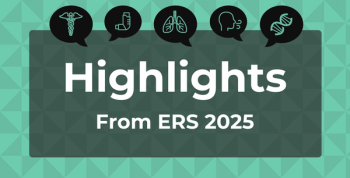
Cost-Savings Model Estimates Reduced Economic Burden With Gene Therapy for Hemophilia A
Gene therapy is a novel approach to hemophilia A treatment that carries a substantial cost up front but may lead to cost savings compared with current prophylaxis agents in the long run.
Hemophilia A is a rare inherited condition characterized by deficient or absent clotting factor VIII (FVIII), and the standard of care is prophylaxis with FVIII concentrate or a hemostatic agent. Factor VIII replacement is also used to treat acute bleeding incidents. The majority of patients with hemophilia A are on lifelong prophylaxis, but the anticipated approval of valoctocogene roxaparvovec, a gene therapy for hemophilia A, would provide a potentially one-time treatment option.
The economic analysis aimed to estimate the potential cost savings with gene therapy in a modelled cohort of men with severe hemophilia A managed with prophylaxis in a 10-year model horizon. CDC estimates of hemophilia A prevalence and severity, national estimates for US Census age and sex distribution among males, and available literature were all used to calculate the number of eligible males with hemophilia A who would be managed with prophylaxis.
Of an estimated 3480 adult male patients with severe hemophilia in the US managed with prophylaxis, half were assumed to be on FVIII prophylaxis. The other half was assumed to be on the bispecific monoclonal antibody emicizumab for prophylaxis.
Both direct medical costs and non-medical costs associated with each treatment were considered in the analysis. Direct costs included drug prices, with the price of valoctocogene roxaparvovec assumed to be a one-time cost of $2.5 million, as well as other treatment-related costs. The costs of currently available prophylaxis options were sourced from national claims databases. Non-medical costs included those associated with early retirement, caregivers, underemployment, absenteeism, transportation to treatment centers, and other non-medical but still hemophilia-associated costs.
The estimated national economic burden shared by employers/private insurers, the public, and households was $2.5 billion per year, with direct medical costs making up more than 97% of those costs. The burden per household per year was estimated at $14,334 annually, with more than 78% of those costs being non-medical.
Based on the assumption that 10% of the modeled cohort would receive valoctocogene roxaparvovec in year 1 upon the drug’s approval, the estimated cost-savings would range from $854 to $982 million over 10 years. This depends on the rate at which those treated with gene therapy end up returning to prophylaxis. Nearly the entire projected cost reduction stems from changes in direct medical costs. In the entire cohort model, the economic burden reduction over 10 years would be an estimated 4% to 5%, while the reduction would be 45% to 52% for the patients treated with gene therapy. Cost-savings would be seen after 4 years based on the projection.
Overall, the projection demonstrates a potential reduction in costs for patients who receive gene therapy rather than currently available prophylactic treatments for hemophilia A once the former is approved by the FDA. The analysis also emphasizes that the main driver of economic burden in severe hemophilia A is drug costs, which are significant regardless of treatment route. The presenting authors also note that potential quality of life improvements should be considered in any assessment of treatment value.
Reference
Wang T, Chen E, Regan C, et al. Impact of gene therapy on economic burden of adults with severe hemophilia A managed with prophylaxis in the United States. Poster presented at: AMCP Nexus; October 11-14, 2022; National Harbor, MD. Poster D14.
Newsletter
Stay ahead of policy, cost, and value—subscribe to AJMC for expert insights at the intersection of clinical care and health economics.













































